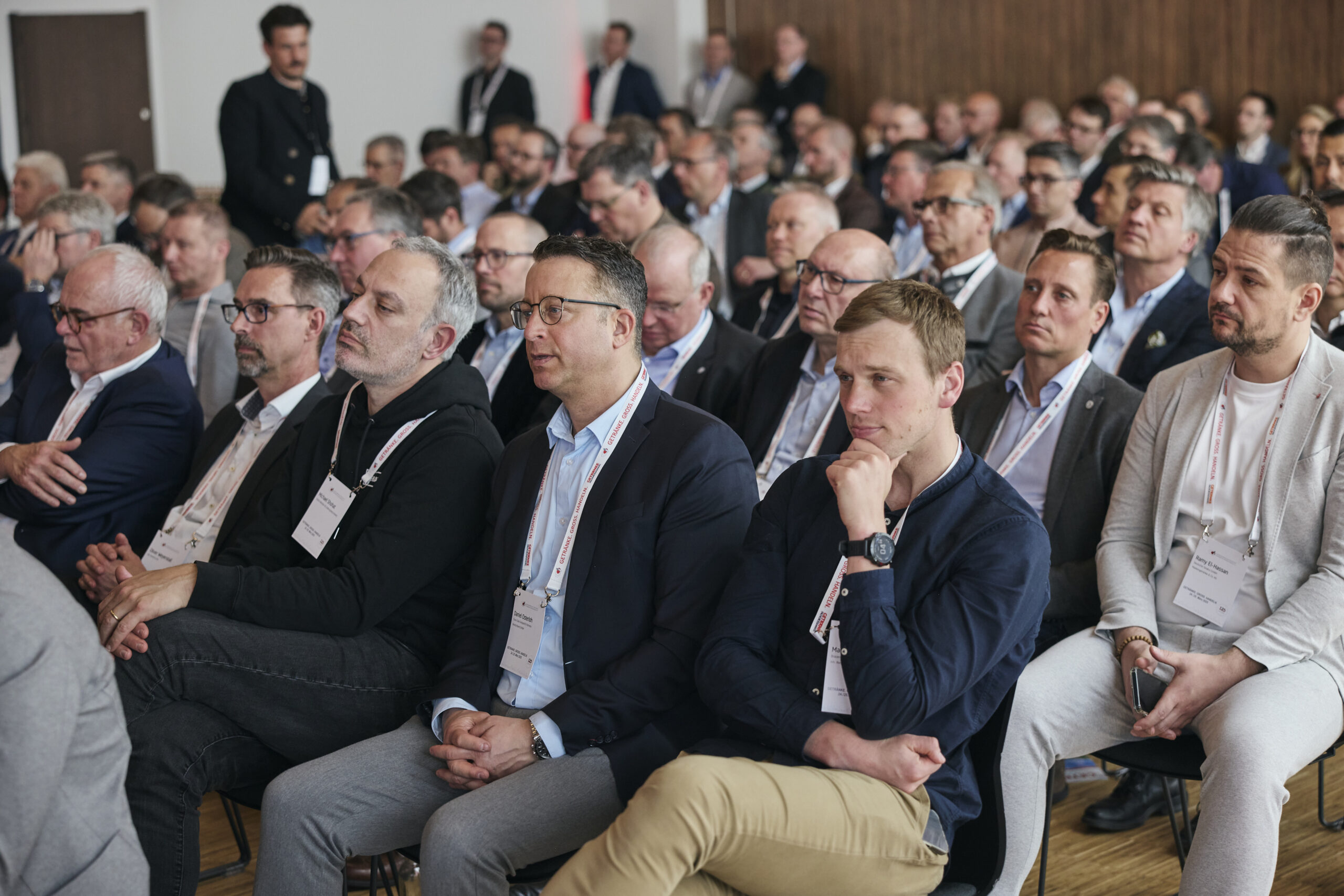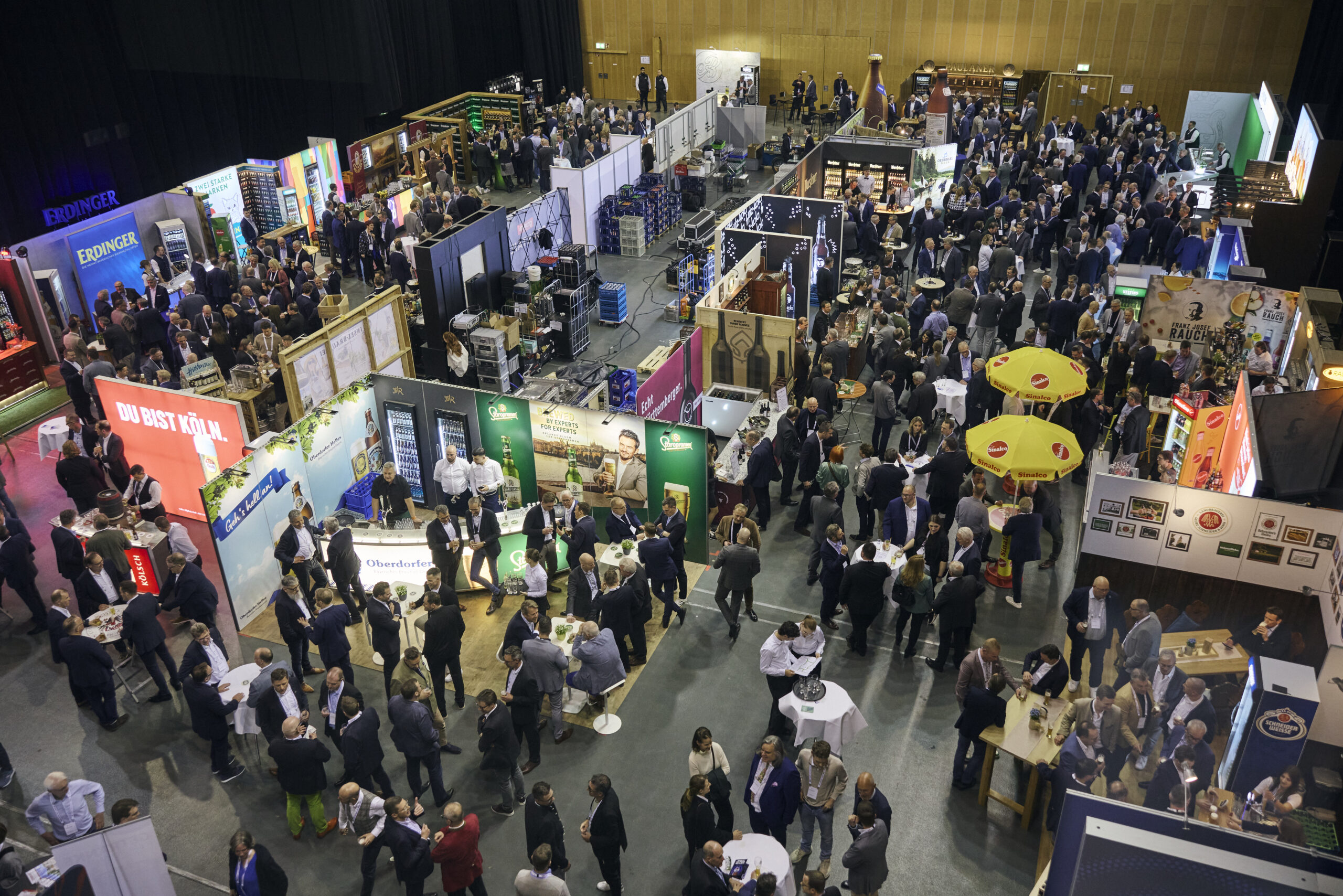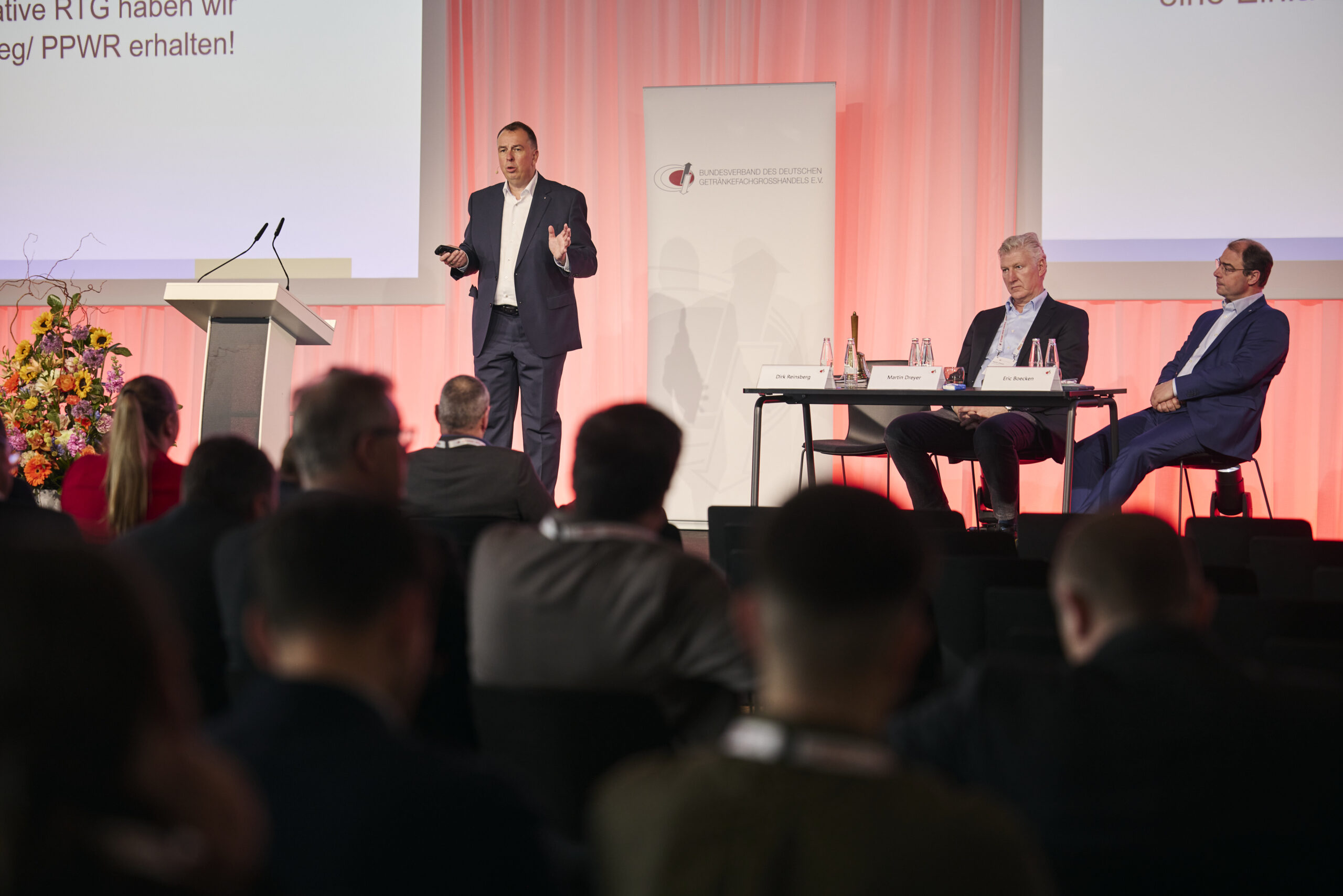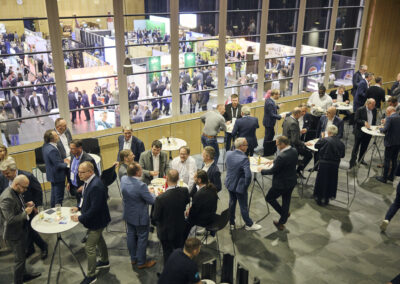Germany: Big Assembly of the German beverage industry – GETRÄNKE. GROSS. HANDELN

(all photos © Jan Duefelsiek & Bundesverband des Deutschen Getränkefachgroßhandels e.V.)
On March 24 and 25, it was that time again: We celebrated our annual industry event BEVERAGES. BIG. TRADE. – with over 600 guests, 33 presentation stands, 4 exciting lectures, and many engaging conversations. One of the highlights this year was the Digital Area, where all participants could test their skills on a race track using a racing simulator. The communication evening was also a resounding success once again.
New honorary member and re-election of the previous advisory board
On the Sunday before the event began, #Die NetzwerkJunioren (The Network Juniors) of the Federal Association of German Beverage Wholesalers met for their third network meeting on the topic of “Storytelling with impact: How to create videos with wow factor tailored to your target audience!”
The industry event officially began with our mandatory general meeting, in which Advisory Board Chairman Eric Boecken emphasized the importance of mineral water while also taking a critical look at declining beer sales. Nevertheless, he appealed to all participants to look positively toward the future. He also expressed his wishes for the incoming federal government and highlighted the #Die NetzwerkJunioren platform as a way to strengthen the next generation.
One highlight was the anniversary film marking the 125th anniversary of the BV GFGH, which impressively showed that the challenges of the past remain similar to those of today. However, it also became clear that all obstacles can be overcome together. In addition, Peter Sagasser was honored for his 26 years of voluntary work and appointed an honorary member of the association.
Eric Boecken and Martin Dreyer were re-elected as chairman and deputy chairman of our federal association’s advisory board. In addition, Dirk Reinsberg took the participants of the general meeting on a tour of the association’s activities in 2024 – from social media and member information to consulting services and webinar and workshop offerings.
Start of the event
Once again this year, our industry event kicked off with the Rundschau für den Lebensmittelhandel (Food Trade Review) honoring Germany’s best beverage retailers of 2025 in cooperation with the BV GFGH (German Food Retail Association). Criteria such as product range diversity, appearance, and marketing activities played a decisive role. Particularly innovative approaches such as robots and information displays for digitalization were highlighted, but one thing became clear: Success depends largely on committed local employees.

(all photos © Jan Duefelsiek & Bundesverband des Deutschen Getränkefachgroßhandels e.V.)
In his opening speech at GETRÄNKE. GROSS. HANDELN. 2025, Dirk Reinsberg explained that, particularly in the brewing and beverage industry, the figures are currently anything but rosy – with sharp declines in sales in many areas. Wine and spirits also failed to shine. Only mineral water springs stand out positively. The industry is in the midst of structural change and the number of companies in the GFGH has continued to decline. These changes, coupled with global and national events such as the war in Ukraine or the change of power in the US, present our industry and our society with ever greater challenges.

(all photos © Jan Duefelsiek & Bundesverband des Deutschen Getränkefachgroßhandels e.V.)
Lectures and trends
Prof. Dr. Frank Brettschneider:
In his presentation on comprehensibility, the communication scientist emphasized how crucial clear communication is for acceptance, trust, and competitive advantages. Important tips included: clearly defining target groups, avoiding complex language, and choosing appropriate communication tools.
Sabine Rogg:
The focus was on future trends for 2025 – from innovative products such as cooling sunscreens to growing interest in electrolyte drinks. Rogg emphasized that consumers are looking for something special, whether through creative brand collaborations or sustainable offerings. The trend is toward less alcohol, more health-promoting beverages, and innovative sales outlets such as delivery services.
Dr. Robert Reiche:
Reusable to-go containers were his focus. He made it clear that the use of reusable containers is an ecological necessity and an economic opportunity. Nevertheless, there are challenges, e.g., with the return system and hygiene standards. Reiche called on the beverage industry to actively participate in the change.

(all photos © Jan Duefelsiek & Bundesverband des Deutschen Getränkefachgroßhandels e.V.)
Focus on mineral water
Maik Hünefeld and Jürgen Reichle from the Association of German Mineral Springs concluded the event. They highlighted the success of the “Am besten natürlich” (Best Naturally) campaign, which has been supported by long jump world champion Malaika Mihambo since 2022. A new focus is now on the catering industry: the “Pro Mineral Water in Catering” campaign aims to stem the shift towards tap water and highlight the numerous advantages of mineral water – including quality, sustainability, and added value.
Many thanks to everyone who was there – whether on stage or in the audience. It was a great pleasure for us!
Mark your calendars now: GETRÄNKE. GROSS. HANDELN. 2026 will take place on February 26 and 27 at the Maritim Hotel in Bonn.